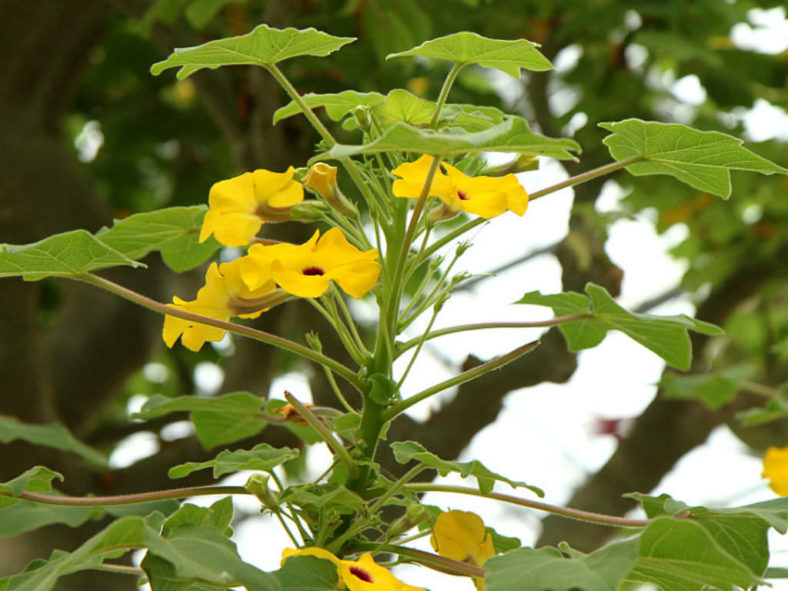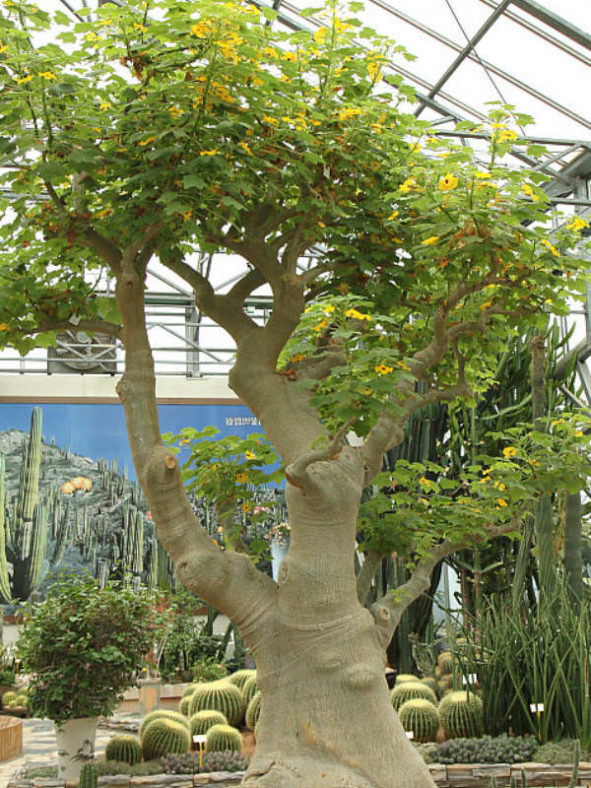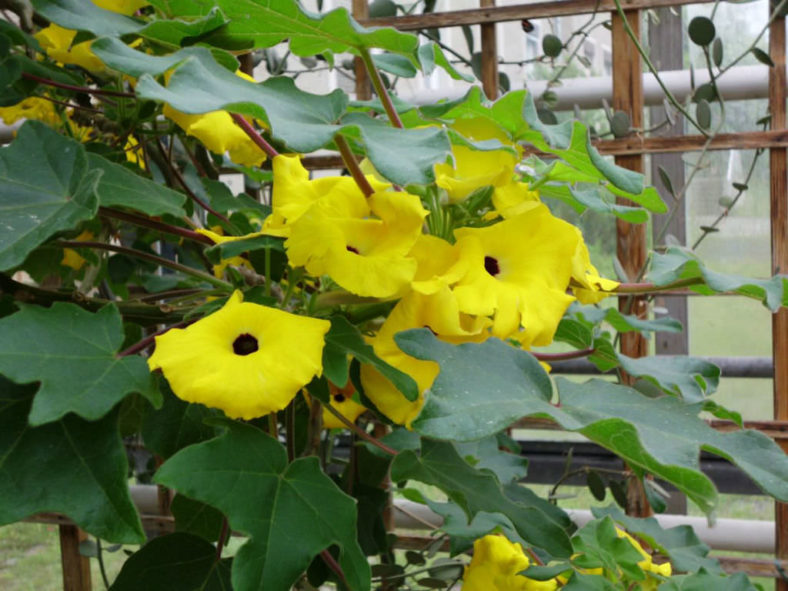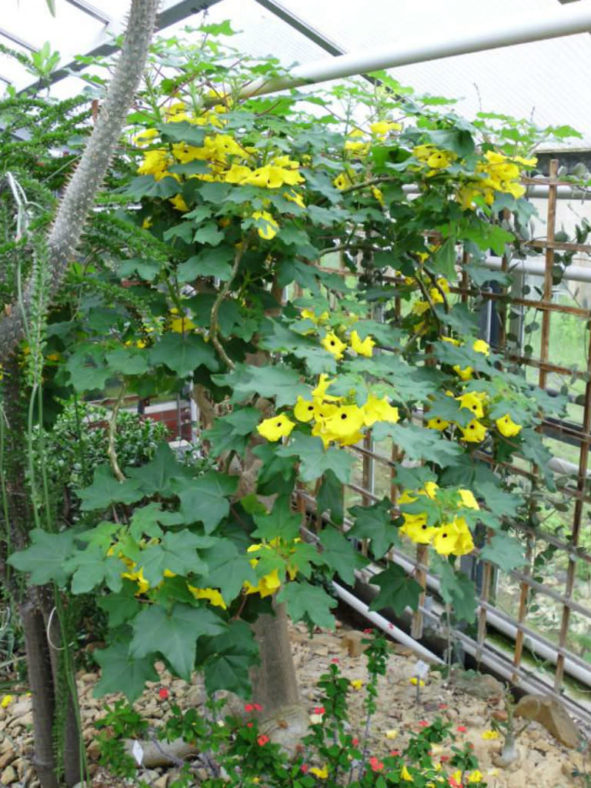Scientific Name
Uncarina decaryi Humbert ex Ihlenf.
Common Name(s)
Succulent Sesame, Mouse Trap Tree
Scientific Classification
Family: Pedaliaceae
Genus: Uncarina
Etymology
The specific epithet "decaryi" (pronounced "de-KAR-yee") honors Raymond Decary (1891-1973), a French botanist and ethnologist.
Origin
Uncarina decaryi is native to Madagascar.
Description
Uncarina decaryi is a caudiciform tree that starts with a nice caudex covered with grayish-ochre bark and ends with a slightly choppy stem. It can grow up to 25 feet (7.6 m) tall, while the caudex can reach a diameter of 1 foot (30 cm). The leaves are lobed, green, and finely hairy. This plant is deciduous and loses its leaves in the winter resting season.
The flowers are bright yellow with a maroon to black throat and appear from late spring to early fall.

How to Grow and Care for Uncarina decaryi
Hardiness: USDA hardiness zone 9a to 11b: from 20°F (-6.7°C) to 50°F (10°C).
One reason Uncarinas are not commonly cultivated is that their seeds do not germinate easily. Why this is, we do not know. Propagation by cuttings is not a substitute because they do not root easily either. In short, a difficult sort to propagate. But once you have managed to get one, it is relatively easy to grow.
Uncarinas need plenty of warmth and plenty of water in the growing season, but keep them dry in the winter. They can grow up to 13 feet (4 m) in the wild, but do not expect that in your greenhouse or windowsill. Uncarinas are tender and cannot endure temperatures below 35°F (2°C). If grown outdoors, they will likely regrow from their roots if frozen. They are quite heat-tolerant. Uncarina needs rich, very well-drained potting soil. Use diluted fertilizer on young plants to speed up growth.
Uncarina blooms easily and is a striking sight when covered with flowers. The seed capsules feature small hooked harpoons.
See more at How to Grow and Care for Uncarina.
Links
- Back to genus Uncarina
- Succupedia: Browse succulents by Scientific Name, Common Name, Genus, Family, USDA Hardiness Zone, Origin, or cacti by Genus
Photo Gallery
Click on a photo to see a larger version.


